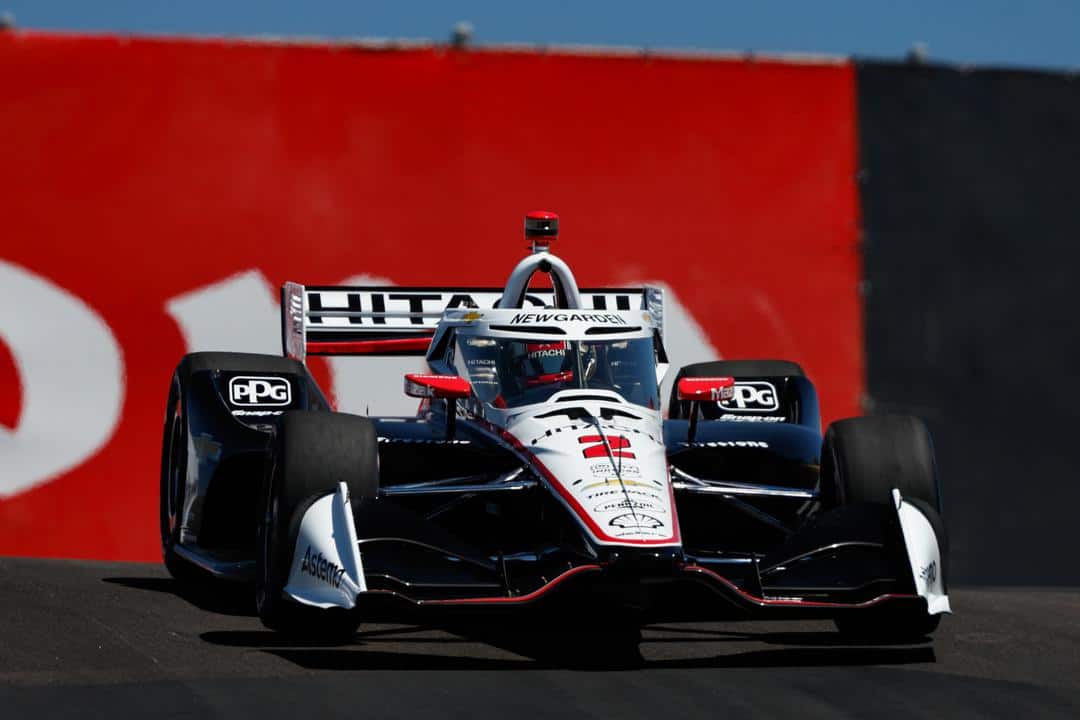When Marcus Armstrong spun after contact with Christian Lundgaard during Sunday’s Firestone Grand Prix of Monterey at WeatherTech Raceway Laguna Seca, the New Zealand native narrowly missed the tire barrier exiting turn 4 before spinning through the gravel trap and across the racing surface, his car coming to a stop but not before almost being struck by two other drivers going through the wall of sand kicked up by the spin.
Armstrong stalled his car as it was pointed the wrong way on the right side of the circuit off the racing line. However, IndyCar did not throw a full course yellow to restart Armstrong’s car. Instead, the decision was made to let the current sequence of green flag pit stops finish up before calling for the yellow flag to restart the No. 11.
This tradition will soon hopefully be over. Let’s explain why.
The introduction of hybrid technology to the NTT IndyCar Series at the upcoming Honda Indy 200 at Mid-Ohio Sports Car Course will bring IndyCar into a new era that has been in sports car racing for over a decade and Formula 1 for a decade now.
The new hybrid motors, when coupled to the existing engines, will allow drivers to gain an additional horsepower boost that, when combined with the push-to-pass boost system, will push the Honda and Chevrolet engines beyond the 800 horsepower mark.
The hybrid system will also allow drivers to start the cars on their own, negating the need for an external starter motor, and this is where things will change significantly.
Armstrong would be able to restart his car on his own and thus a full-course yellow would be avoided. This would eliminate many red flags in practice and qualifying sessions when drivers spin and stall their cars, requiring assistance from the safety team to get restarted.
However, this would also eliminate IndyCar’s practice of holding a full-course yellow until all drivers have been able to pit to finish a pit sequence, and that practice has been a source of controversy for some time.
It’s understandable to see why IndyCar would leave the track green. If a driver hasn’t pitted during a green-flag pit sequence, they are at significant risk of their race being ruined if a full-course yellow is called. That driver will have to pit under the yellow, putting them behind all other drivers that have already pitted under green.
With passing being at a premium on road and street courses, that could take a driver that has run up front…
Click Here to Read the Full Original Article at …

